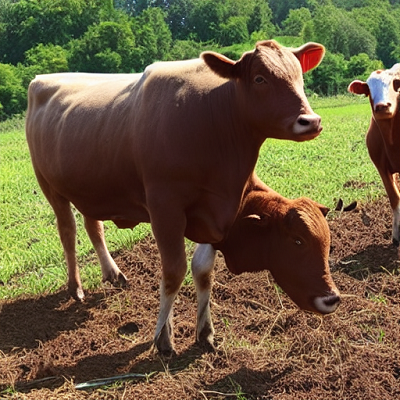Regenerative agriculture has emerged as a promising approach to sustainable farming that focuses on enhancing ecosystem health and restoring the natural balance of agricultural systems. Livestock play a crucial role in this regenerative paradigm, serving as key components in improving soil fertility, managing landscapes, and contributing to overall ecosystem resilience. By integrating livestock into regenerative systems, farmers can harness the natural behaviors of animals to regenerate land, enhance biodiversity, and promote carbon sequestration.
Regenerative agriculture is like the organic farming version 2.0 – it’s all about going beyond sustainable practices to actively improve the land. Think of it as giving Mother Nature a high-five for all the hard work she does.
The Role of Livestock in Regenerative Practices Livestock in regenerative agriculture are like the fuzzy, four-legged superheroes of the farm. They’re not just there for their charming good looks – they play a crucial role in restoring and maintaining the health of the land. It’s like having a squad of eco-warriors munching their way to a greener planet.
The Importance of Livestock in Ecosystem Health Livestock aren’t just cute faces on the farm – they’re actually undercover ecosystem managers. They help keep the balance in check, like the zen masters of the land. And that’s not all – they’re also the soil whisperers, enhancing its fertility and health with their special “organic” touch.
Enhancing Soil Fertility and Health Livestock are like soil magicians, sprinkling their special blend of nutrients and organic matter wherever they roam. This helps nourish the soil, boost its fertility, and create a thriving underground universe of happy microbes. It’s like giving the soil a spa day – rejuvenating and invigorating it for optimal plant growth.
Benefits of Integrating Livestock into Regenerative Systems Integrating livestock into regenerative systems isn’t just a trend – it’s a game-changer for the farm. By diversifying farming systems with our furry friends, we not only increase resilience but also reduce our reliance on chemical inputs. It’s like hitting two birds with one stone, but in a much friendlier, eco-conscious way.
Diversification of Farming Systems Livestock bring a whole new level of diversity to the farm party. They’re like the cool kids who shake things up and keep the energy flowing. By adding livestock into the mix, we create a more robust and resilient ecosystem that can weather the storms (both literally and metaphorically). Reducing Reliance on Chemical Inputs By integrating livestock, we can reduce our dependence on synthetic fertilizers and pesticides, creating a healthier, more sustainable environment. It’s like swapping out a processed diet for a fresh, organic feast – your farm will thank you later.
Grazing Management Practices for Soil Health Grazing management isn’t just about letting the livestock roam free – it’s a careful dance that can make or break the health of the soil. Using holistic planned grazing techniques, farmers can ensure that the land gets just the right amount of love from our four-legged friends. It’s like having a precision-guided missile of soil health – hitting the bullseye every time.
Carbon Sequestration and Methane Mitigation through Livestock Grazing Role of Livestock in Carbon Storage Livestock are like nature’s little carbon accountants. Through their munching and manure, they help lock carbon into the soil, acting as living carbon banks. It’s like having tiny environmental superheroes roaming the fields, quietly sequestering carbon and fighting climate change one hoofprint at a time. As we continue to explore innovative farming methods that prioritize environmental stewardship and long-term sustainability, the role of livestock in regenerative agriculture will remain vital in shaping a more resilient and thriving food production landscape for future generations.
